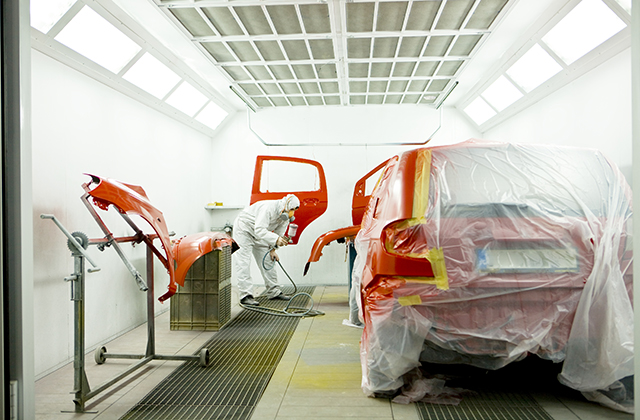Take extra time to prepare properly for your exterior painting project is a direct investment of your time and money. Good exterior painting preparation has been proven to help the paint last longer, look better and prevent other related problems such as mold growth, chipping and peeling. Get started on your successful exterior painting project by reading and following the exterior painting preparation steps below. If you just aren’t up to painting on your own, then make it easy on yourself by finding a professional and reliable painter in your city. The term car paint correction should only really be used if these imperfections are properly removed and are not just merely covered up or hidden with filler based products.
Prepare Yourself
Exterior panting preparation is a dirty job, so you should wear clothes that you don’t mind dirtying. Furthermore, you will be getting wet, so keep that in mind as well when you select your clothes for this project and prepare for it before one day. It is also essential and safe that you wear protective goggles, especially during the scraping process. Chipped-off paint and other materials could easily fly into your eyes and cause serious damage to your eyes. Don’t take any chances be safe: Prepare properly by having a good pair of goggles or protective glasses. Work gloves are also necessary and important for protecting your hands during the prep process in your home or offices.
Spray the Dirt Away
This is essential because paint will not stick well to any type of dirt, especially the outdoor kinds of dirt like grime and dust. While some recommend using a power washer for this step, others caution that it can cause more harm than good. This is because it could also drive water deep into or behind wood siding or trim. If the soffit gets too wet, the wood will swell and quickly cause the new paint to peel off. Even if you don’t have wood siding, it still may be a better idea to use a hose with a strong water flow rather than a power washer.
For even stronger cleaning than just a hose, use a special brush attachment for the hose along with liquid soap; just make sure to rinse off all of the soap. You may want to consider using rags and sponges, depending on the amount of dirt on the exterior of your home. The more dirt, the more scrubbing you’ll need to do. If there are any areas with mold or mildew then it is advisable to wash with an anti-fungal cleaner. These types of cleaners can be found at hardware or home improvement stores easily in your nearest market.
Scraping
Make sure to have your goggles on when you scrape any loose paint over wall. To be most effective, use a paint scraper, putty knife or wire brush will be more effective and less time consuming. For stubborn paint, or for scraping multi-layered paint, consider using a heat gun or rotary paint remover. A heat gun looks like a hair dryer and reaches very hot temperatures, as high as 100 degrees Fahrenheit. Make sure to wear work gloves to protect your hands and keep the heat gun away from all fresh paint, paint fumes, paint cans or paint thinner/cleaner to avoid fire hazards. Another option for removing stubborn paint is a rotary paint remover, which can be attached to an electric drill. The stiff wire tines on the rotary quickly remove large areas of paint. Take caution when you are using this tool, as it should never come into close contact with your body parts. Consider practicing on a small piece of wood before working on the siding.
Sand & Repair
For wood siding, fill any gouges or holes with patching compound; make sure the compound is exterior grade. Sometimes this product is called plastic wood, so keep that in mind when you go to purchase this product. You will also need to sand the edges of the area of removed paint to help the new paint cover and hide the edge. Caulk any cracks, seams or gaps with paintable exterior caulk. It’s important to be meticulous near the doors and windows so that the paint will stick properly in these tricky areas.
Taping & Covering
This is the final step before getting into the actual painting. You will need to tape off any areas not be painted, such as around windows, with painter’s tape. Place drop cloths anywhere that you do not want paint dripping, including shrubs, bushes, porches and the like.
Mumbai leading and reliable interior and exterior painting, waterproofing, plumbing services provider Paintguru visit us: http://www.superiorshine.com.au/
Article Source: http://EzineArticles.com/expert/Santosh_Sethi/2226582
Article Source: http://EzineArticles.com/9265206
